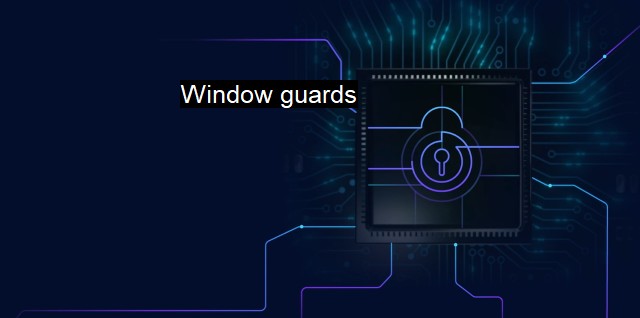What are Window guards?
Fortifying Your Cyber Defenses: The Importance of Window Guards for Enhanced Antivirus Protection
Window guards refer to software tools and strategies implemented to protect a specific part of the computing environment. These aren't physical implements as one might assume from the term but a line of defense in cybersecurity systems. This concept gets its name from the metaphor of a window typically viewed as a vulnerability in a building's security. In the digital world, every connection point, every interface can be metaphorically seen as a window - an opportunity for unauthorized access by malicious users or software.Window guards operate on the principle of limiting unauthorized access and interaction with these "windows". These can be various software interfaces, specific system processes, data flow channels, browsing interfaces among others. Every point where data flows in or out, or system changes are made, is an interface that can be exploited. Window guards effectively aim to 'guard' these interfaces or 'windows,' thereby ensuring system integrity.
Effective window guards typically function using advanced user and entity behavior analytics (UEBA), where the access and usage patterns of system interfaces are constantly monitored. This enables the system to quickly identify any anomalous behavior or unauthorized access attempts flagging them for review, or triggering automatic protective measures such as temporarily freezing the interface, or isolating it from the rest of the system ensures robustness in security measures. Adaptive authentication measures can also form part of window guards by regulating user access rights.
Deep packet inspection is another feature often integrated with window guards. This process involves the analysis of data packets that flow through the 'window'. The guards review the details in each packet for malware, spyware, or virus and ensure safe transmission and reception of data.
In further stages, window guards would connect to, or include an Intrusion Detection System (IDS). This feature would cover not just the basic analysis of unusual or unauthorized activity but advanced heuristic learning and AI. It will allow guards to anticipate attempted exploits and make predictive moves to counter such breaches. Potentially, such systems would have some degree of machine learning built into them, whereby their capability to accurately anticipate intrusions will improve over time based on exposure to more data and occurrence patterns.
Also intrinsic to window guards is the premise of encryption. Irrespective of how fortified these 'windows’ are, data that passes through can be intercepted and misused if not adequately encrypted. Hence, robust algorithms are used to secure data transmission in and out of these interfaces.
While no strategy delivers 100% security, window guards are a central part of many cybersecurity and antivirus plans as a dedicated line of defense towards reducing system vulnerability. Today's world is an integrated digital ecosystem with seamless and perpetual data flow. Security of every small window in this wide network can potentially prevent higher-level network breaches making window guards essential not just at the macro level but also at the microsystem level throughout the digital sphere.
Window guards provide an additional layer of security to safeguard the system's 'windows' or points of interface from potential threats. They represent just one aspect of a comprehensive cybersecurity and antivirus strategy that uses a systematic and multi-faceted approach to minimize cyber threats. Their necessity continues to grow as our reliance on electronic systems and the internet expands, and with it, the potential risk of cyber threats.

Window guards FAQs
What are window guards in the context of cybersecurity?
Window guards refer to security measures designed to protect a computer's window interface from unauthorized access or intrusion attempts. These tools can help prevent malware, viruses, and other cyber threats from infiltrating a user's device through the window interface.What are some examples of window guard software?
There are several popular window guard tools available for download, including WindowGuard, WinGuard, and WinLock. Each of these programs offers different levels of protection and customization options for securing a user's device from cyber threats.How do window guards work to protect against cyber attacks?
Window guards typically use a combination of encryption, access controls, and monitoring tools to prevent unauthorized access to a user's window interface. These programs can also alert users to suspicious activity or potential breaches, allowing them to take quick action to protect their devices and data.Are window guards a replacement for antivirus software?
While window guards can provide an additional layer of protection against cyber threats, they are not a replacement for antivirus software. Antivirus programs offer more comprehensive protection by scanning a user's system for known malware and other harmful programs. It is recommended that users use both window guards and antivirus software to ensure maximum protection against cyber attacks.| | A | | | B | | | C | | | D | | | E | | | F | | | G | | | H | | | I | | | J | | | K | | | L | | | M | |
| | N | | | O | | | P | | | Q | | | R | | | S | | | T | | | U | | | V | | | W | | | X | | | Y | | | Z | |
| | 1 | | | 2 | | | 3 | | | 4 | | | 7 | | | 8 | | |||||||